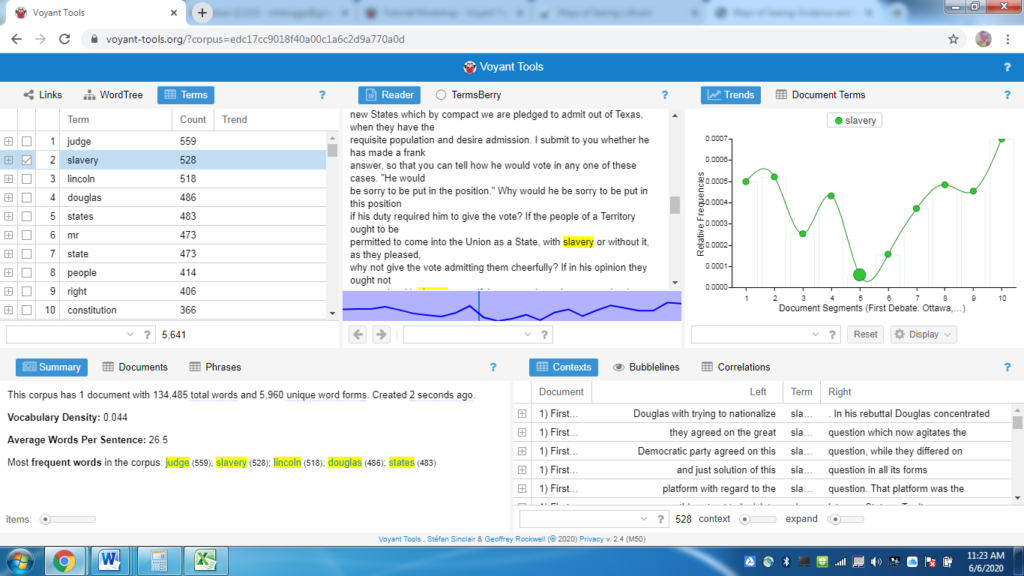To reprise, I wish to develop a project using the text of the famous Lincoln-Douglas debates of 1858, focused on what the two Illinois statesmen said about slavery and race. I found the text of the debates at the Lincoln Home National Park Service website, https://www.nps.gov/liho/learn/historyculture/debates.htm.
The purpose of the exercise is to teach historical skills of interpreting what people in the past said within historical context; in this case, to ask students to evaluate Lincoln’s statements independently and in context of Douglas’s. Secondary source literature about Lincoln and many of Lincoln’s own words show that he was hardly a radical antislavery figure before the Civil War. But Lincoln is considered to have been more liberal about slavery and black civil rights than Douglas.
I have uploaded the text of the debates to Voyant, and have practiced data manipulation with some of the tools.
In this image I am interested in the Trends tool’s display of the changing frequency of usage of the term “slavery” over the course of the debates:

The graph shows change from place to place, since the text is arranged in the order of where the debates occurred in western Illinois. Using this tool, the exercise could shift to attempt a correlation of what the two speakers said about slavery in relation to demographic data available about each community where debates occurred. U.S. Census records from 1850 and 1860 disclose racial and economic data from Illinois counties where the debates occurred.
But this direction isn’t quite where I wish to go at this point. To enable a comparison of Lincoln and Douglas, I need to split the debates into two texts, one containing only Lincoln’s statements, and one containing only Douglas’s, then consider word frequency, trends, and contexts for each of them separately.
Voyant offers several tools with which I need to become more familiar. That is the central, immediate next step.